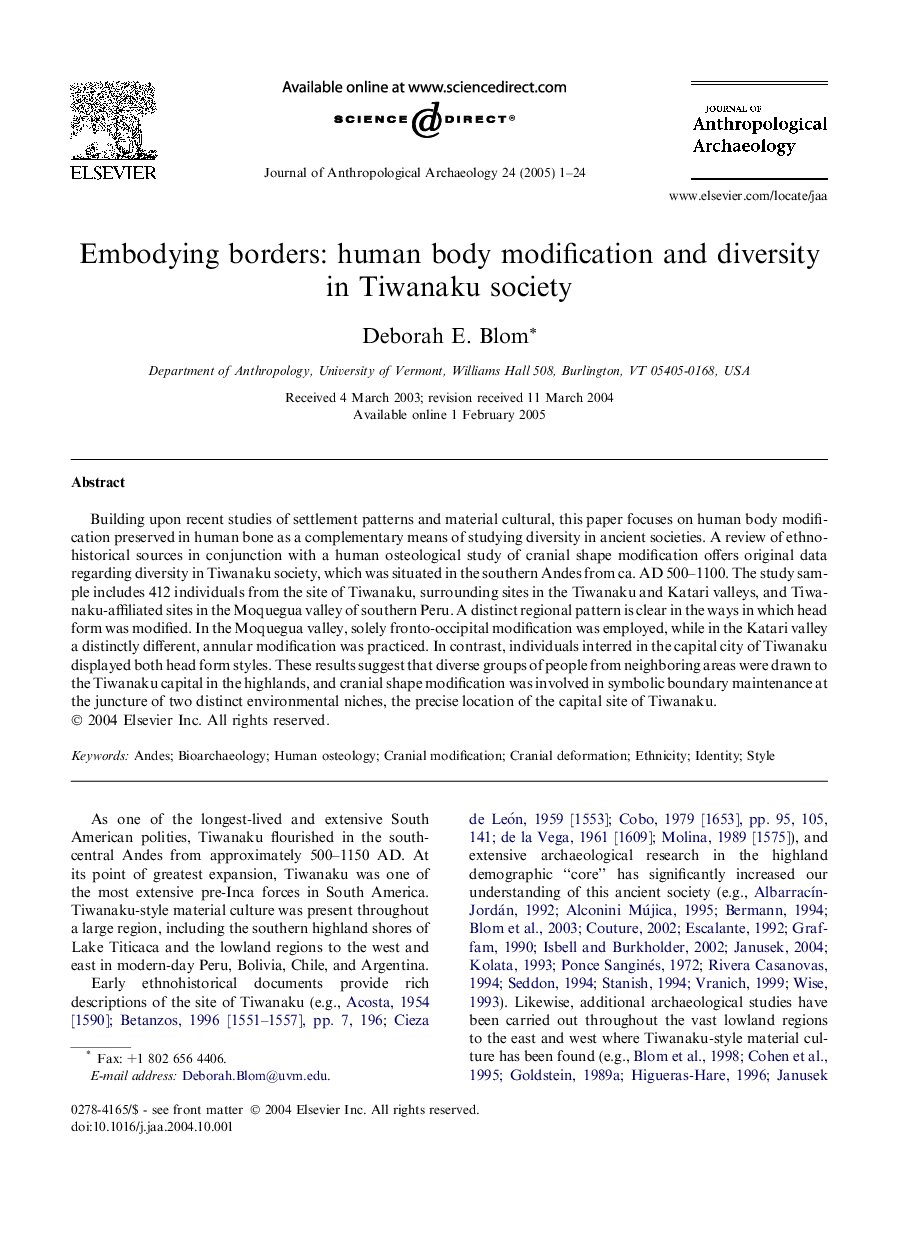| Article ID | Journal | Published Year | Pages | File Type |
|---|---|---|---|---|
| 10498784 | Journal of Anthropological Archaeology | 2005 | 24 Pages |
Abstract
Building upon recent studies of settlement patterns and material cultural, this paper focuses on human body modification preserved in human bone as a complementary means of studying diversity in ancient societies. A review of ethnohistorical sources in conjunction with a human osteological study of cranial shape modification offers original data regarding diversity in Tiwanaku society, which was situated in the southern Andes from ca. AD 500-1100. The study sample includes 412 individuals from the site of Tiwanaku, surrounding sites in the Tiwanaku and Katari valleys, and Tiwanaku-affiliated sites in the Moquegua valley of southern Peru. A distinct regional pattern is clear in the ways in which head form was modified. In the Moquegua valley, solely fronto-occipital modification was employed, while in the Katari valley a distinctly different, annular modification was practiced. In contrast, individuals interred in the capital city of Tiwanaku displayed both head form styles. These results suggest that diverse groups of people from neighboring areas were drawn to the Tiwanaku capital in the highlands, and cranial shape modification was involved in symbolic boundary maintenance at the juncture of two distinct environmental niches, the precise location of the capital site of Tiwanaku.
Related Topics
Social Sciences and Humanities
Arts and Humanities
History
Authors
Deborah E. Blom,
